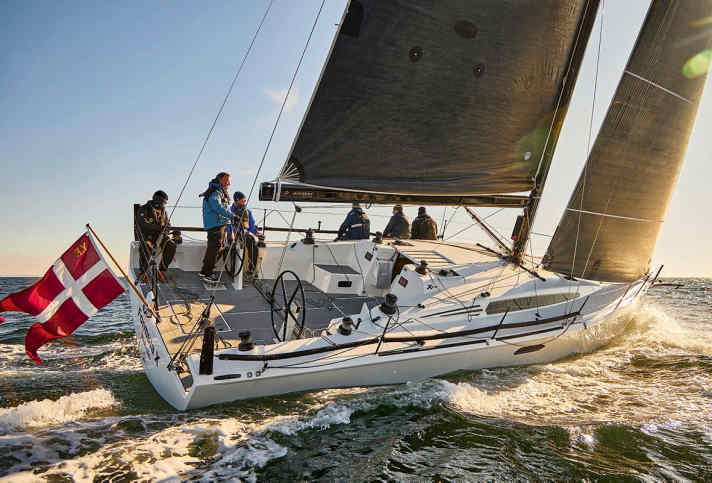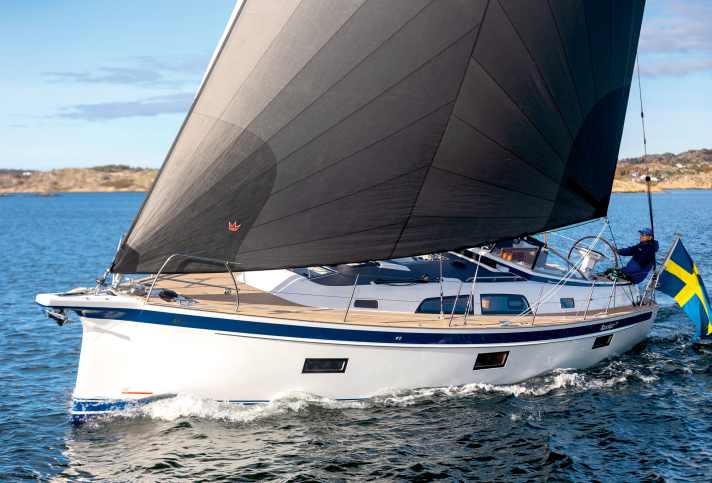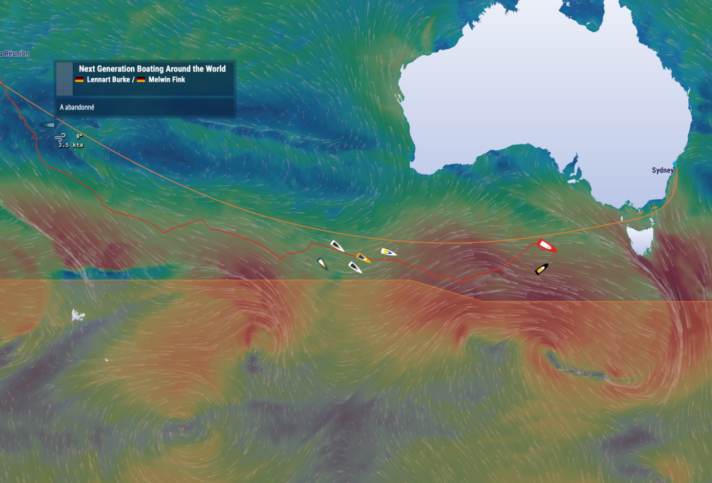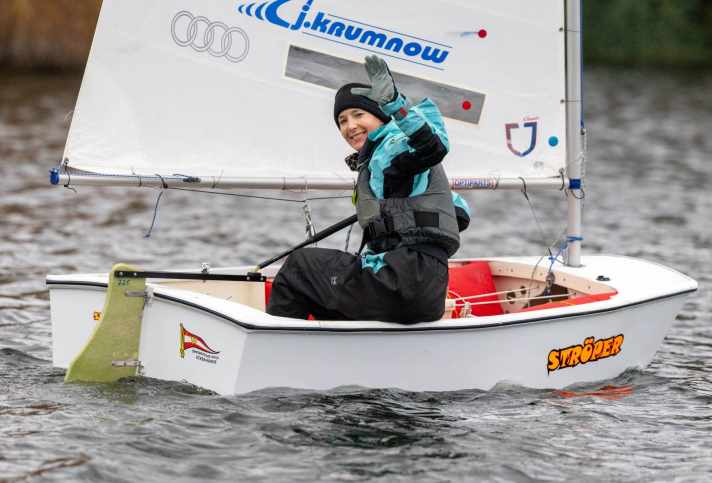
Dear readers,
Getting away from it all - for many sailors, this goal is at the top of the list when they set off on a cruise. Free cruising from everyday life. Spatially, physically, mentally. However, unless you are heading for a secluded anchorage for the night or even travelling away from the shore, mooring in the evening is just as much a part of the experience. After all, going ashore also has its charms, from sightseeing to sundowners on the beach - and apart from that, you're back on the water the next day anyway, alone with yourself, the sun and the wind.
So it's all quite relaxed, isn't it? Well, yes. There is one situation in the harbour that requires more "closeness" than others, and therefore also more care and consideration: the packet. Everyone knows the situation when the tension turns into certainty on arrival. Either there is no single space available at the start or there is so much going on that the likelihood of remaining alone is minimal, even if you manage to get the last gap alongside. A neighbour is sure to come along. Or two, or three, or four.
All the yachts are connected to each other, all dependent on each other when it comes to mooring and casting off. All members of this "community" on the inside serve as a floating bridge to the pier for the others. A willingness to co-operate and a collegial approach should therefore be a matter of course; after all, any crew can find themselves in such a situation at any time and be dependent on others.
Unfortunately, not everyone has this simple insight. This summer was no different: our editorial team recently received several emotional letters about this. In one case, even lines that were already tied up were simply thrown out again by the inside berth holder, which is anything but safe in an area like the Channel Islands with their strong tidal currents.
And yet you experience it again and again. My cautionary tale: In an island harbour in Brittany, the glossy maxi of a German yacht club had occupied almost the entire wall. Instead of an inviting fender, there was an elaborate, easy-to-read sign hanging outboard: "bord-à-bord interdit!" No going alongside! Apparently the international reputation of their club was less important to the German guests than the shiny gelcoat of their snow-white yacht.
As unpleasant as such experiences are, they are fortunately only the exceptions that prove the rule. For the vast majority of water sports enthusiasts, despite their individuality, an awareness of community is a matter of course. Regardless of the requirements of good seamanship and special etiquette, common sense counts: together instead of against each other.
There really isn't much to it: Asking questions before going alongside, helping with the manoeuvre, making arrangements about the lines and the desired start time of the inside sailor the next morning. Anchor at the right height, never pull on the railing supports or sea fence, always go over the foredeck and - as our unforgotten colleague Manne used to say: "Schoh uttrecken." Take your shoes off before climbing back on board your packet mate after the shore leave - at least if they are "schietig", i.e. dirty.
As I said, there are only a few that make waves. When I was in the packet in Sweden this season, everything was always fine. And more than once, the locals even gave us very good tips. We would have missed a highlight of the trip without this encounter.
My favourite story on the subject? It also comes from Sweden, from the west coast: in a small harbour, only packages of a maximum of three boats were allowed because the sound was very narrow at this point. We were moored in the centre, with a cruising yacht from Norway on the outside. We chatted to each other. Over there, people had just made a coffee and then wanted to relax and move on in an hour or two.
However, when another sailor appeared in the fairway and couldn't find a place, the young Norwegian couple left their coffee without further ado, said a cheerful goodbye to us and immediately set off. "Have a nice stay!" the skipper called over to the newcomers. They thanked her and shortly afterwards were moored alongside us themselves. We were soon chatting again. As one does in a packet.
Christian Tiedt
YACHT editor
Recommended reading from the editorial team

YACHT readers' trip
On the "Sea Cloud II" 900 nautical miles through the Caribbean

The multifaceted YACHT readers' trip through the Caribbean dream destination starts on 6 March and takes us through one of the most beautiful sailing areas in the world in ten days.
Shipyard portrait
Pure Yachts produces in small series with big goals

The Pure Yachts shipyard, newly founded in Kiel, focuses on long-distance performance yachts made of aluminium. It can already boast its first successes.
Baltic Sea
Fehmarn Sound Bridge - Reduced clearance height

Watch out for the mast stop! The clearance height of the Fehmarnsund Bridge has been reduced until summer 2026. Due to construction work, only 20 metres are available instead of the usual 23 metres.
M.A.T. 11
The Orient-Express is set to become the new ORC pick-up

Hot racer from the Orient. The M.A.T. 11 is set to create new excitement in the ORC scene. The design comes from Matteo Polli.
Shadows in paradise
Brutal attack on expedition boat in Papua New Guinea

The first motorless circumnavigation of Antarctica by sailing boat was abruptly interrupted by a brutal robbery in Papua New Guinea. The expedition ship "Zhai Mo 1" was badly damaged and looted, putting the voyage of the Chinese sailor Zhai Mo on ice for the time being.
Dispute over measurement
ORC and X-Yachts agree on cooperation - joint statement

Due to the debate surrounding the XR 41, the Offshore Racing Council (ORC) is reviewing its algorithm for calculating race values.
Hallberg-Rassy 370
Sailing and living at the highest level in the YACHT test

With the Hallberg-Rassy 370, the Swedes present a cruising yacht that leaves almost nothing to be desired. We have tested the first model.
Globe40
On course for La Réunion - concerns about the mast remain

Lennart Burke and Melwin Fink are on their way back to La Réunion in the Globe40. While the competition is aiming for Sydney, the GER duo are fighting on all fronts.
Gitana 18
Caudrelier "talented and humble like Michael Schumacher"

Charles Caudrelier is the skipper who will sail "Gitana 18" into the future. Ariane de Rothschild compares him to Formula 1 legend Michael Schumacher.
Eisarsch
Historic victory - Undine Höfener wins on the Wakenitz

For the first time since 1969, a woman has won the traditional Eisarsch regatta in Lübeck: Ulrike Höfener won the pre-Christmas fun on the Wakenitz.
Newsletter: YACHT-Woche
Der Yacht Newsletter fasst die wichtigsten Themen der Woche zusammen, alle Top-Themen kompakt und direkt in deiner Mail-Box. Einfach anmelden:

